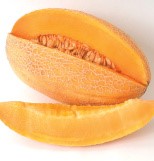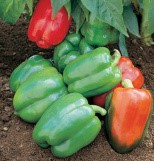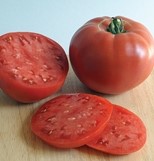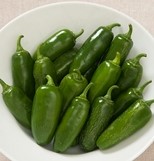Description
The earliest-ripening Eastern-type cantaloupe.
Developed for far northern, coastal, and mountain climates. Gardeners in these difficult, cool-weather areas often grow their first ripe melons ever, using this variety. The oblong, orange-fleshed fruits have light netting, and average about 3 lb. Melons are sweet with average flavor. An open-pollinated precursor to newer hybrids, released in 1966 by the late Prof. Meader, Univ. of New Hampshire. Organically grown.
CULTURE:A light, well drained soil with a pH of 7.0 and a southern exposure is ideal. Good soil moisture is important in early stages of growth and during pollination when fruits are setting. After this point do not water unless the soil is very dry and leaves begin to show signs of wilting in midday.
TRANSPLANTING:Sow indoors in 50 cell plug trays or 2-3″ peat pots in late April or one month (no sooner!) before transplanting outdoors. Plant 3 seeds per cell or pot, about 1/4″ deep. Keep temperature 80-90°F (27-32°C) until germination. Handle young plants carefully and never let the soil dry out. Grow seedlings at 75°F (24°C). Reduce water and temperature for a week to harden seedlings. When the weather is frost-free, warm, and settled, transplant 2-3′ apart in rows 6′ apart or thin to 1 plant/pot or cell with scissors and transplant 18″ apart. Even hardened melon seedlings are tender! Do not disturb roots when transplanting, and water thoroughly.
DIRECT SEEDING:Sow 1-2 weeks after last frost when soil is warm, above 70°F (21°C), 3 seeds every 18″, 1/2″ deep, thinning to 1 plant/spot.
ROW COVERS:Since melons like consistently warm conditions, plastic mulch and row covers (refer to Index) will make for earlier crops and better yields, especially in the North. Remove covers when plants have female flowers (tiny fruit at base of blossom).
DISEASES:Choose varieties resistant to diseases in your area. “Sudden wilt” is a complex disease and cold weather stress syndrome in late summer when plants have a heavy set of ripening melons, can cause plants to wilt almost overnight. Keep plants healthy with good fertility and irrigation to avoid sudden wilt.
INSECT PESTS:Protect against cucumber beetles with floating row covers applied at transplanting, or control with pyrethrin or azadarachtin. (See index)
RIPENESS:Each variety is a little different and must be learned! Most melon varieties are ready when the gray-green color begins to change to buff-yellow and when a light tug separates the fruit from the vine. Some melon types, like honeydew, charentais, canary, Spanish, and crenshaw are overripe by the time the stem can be tugged from the fruit. These must be cut from the vine.
STORAGE:All melons should be stored at 85-95% relative humidity. Store ripe netted melons at 36-41°F (2-5°C); store other melons at 45-50°F (7-10°C) for 7-14 days.
DAYS TO MATURITY:From transplanting; add about 10 days if direct-seeded.
AVG. DIRECT SEEDING RATE:30 seeds sows 10′, 100 seeds /50′ 1M/500′, 15M/acre at 3 seeds every 18″ in rows 6′ apart.





Reviews
There are no reviews yet.